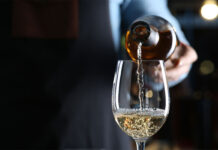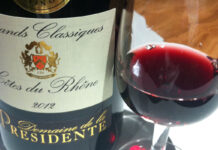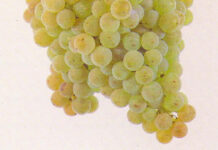
Luke Richardson has worked in a range of venues across the UK, specialising in wine, and is now general manager at Haar restaurant in St Andrews. In his column for SLTN he shares his thoughts on all things wine-related and answers your questions about wine. If you have a question for Luke email it to sltn@peeblesmedia.com
HELLO again all! This time around I thought I would talk about wines from Piedmont, in north western Italy – a region well-loved for being the home of the Nebbiolo grape variety.
It makes highly tannic wines with fairly high acidity, that usually take several years of bottle-ageing to be ready to drink (ie. when the tannins have softened off and the acidity has mellowed somewhat).
Whilst it is most famously used in the wines of Barolo and Barbaresco, there are many other wines in which this great grape variety features, such as Gattinara, Langhe, Carema and Roero; and, with modern wine-making techniques, these lesser-known areas are making wines that are more approachable at a younger age.
Alongside Nebbiolo there are several other grape varieties that are not only delicious but considerably cheaper and ready to drink much sooner too, such as Barbera, Dolcetto and Freisa for red wines, and Moscato and Arneis for whites.
Whilst the aforementioned Barolos and Barbarescos are indeed delicious, they are also pricey (starting around £25 plus VAT and rapidly increasing for the decent stuff) so a good trick is to find a good producer who makes these more expensive wines and opt for a cheaper grape like Barbera (c£13 + VAT) or Dolcetto (c£12 + VAT).
Barbera is the most widely-planted red grape variety in Piedmont, and generally produces medium to full-bodied wines often with plum flavours, generous fruit and a slightly herbal finish.
Asti and Alba are towns to search out for higher quality, albeit at slightly higher cost.
Whilst I have been lucky enough to try some pretty amazing Nebbiolo-based wines, I would rather spend money on the best example of a Barbera from a great producer than limp in with the entry level Nebbiolos – and this is something that can easily be capitalised on in a bar or restaurant setting.
Aldo Conterno, Bruno Giacosa, G.D. Vajra, Borgogno, Paolo Scavino, Robert Voerzio, Elio Altare and even the great Gaja himself all make amazing Barberas.
Talking of Gaja, one of my all-time favourite wine quotes is a local Piedmontese joke: “Did you hear about this guy called God walking around pretending to be Angelo Gaja?”
On the other end of the Barbera scale, the wines are still a joy to drink, just a little simpler – fleshy fruit and more on the medium weight; and universally good with food – heavy enough (just) for red meats, light enough for chunkier fish dishes, or just a lovely glass on its own.
Dolcetto is less well known, and possibly less appealing for a wider audience – which is a shame!
They tend to also be medium-bodied, but with relatively low acidity, meaning that they should be consumed young.
Often with flavours of black cherry, brambles, liquorice and with a slightly bitter almond finish, these are really wines for quaffing and their soft fruit make them easy to do so! They are good with salamis, sausages, hearty meat pasta and even barbecued food.
And as they come around a lot quicker than the Nebbiolo wines, and need far less aging, they also offer pretty decent value for money, even from the top producers.
Happy hunting!



















